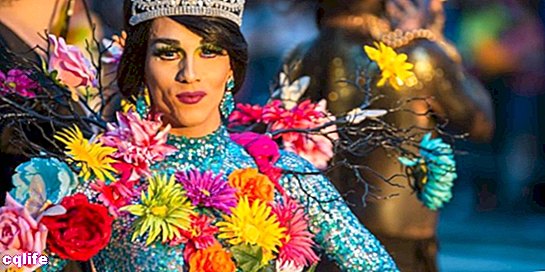- What is gender identity?
- How is gender identity built?
- Importance of gender identity
- Types of gender identity
- Gender identity law
- Gender identities and sexuality
We explain what gender identity is, how it is constructed and its differences with sexuality. In addition, laws that contemplate it.

What is gender identity?
Gender identity is the subjective perception that an individual has regarding their own gender, regardless of their sexual orientation or biological sexual characteristics.
In other words, it is about the personal, intimate, psychological or psychic identification that a person has with respect to the gender to which he belongs: if he feels he belongs to the male, female or some other possibility, regardless of the biological sex with which he has born.
Gender identity, then, should not be confused with sexual orientation, much less with sexual identity: the latter is made up of three different elements: sexual orientation (why gender is sexually attracted), gender role ( how he exercises his own gender) and, finally, gender identity.
The concept of gender identity emerged in the realm of American psychiatry in the 20th century. In recent times, it has become very relevant, due to the increasing visibility of homosexuality, sex divergence, transgender sexuality and non-binary genders.
Although the reality it designates is as old as the human being This concept itself is relatively new. Therefore, it is usually accompanied by a certain controversy, since it encounters considerable resistance from the most conservative sectors, who insist on the existence of only two genders: female and male, which have certain biological, physical and social characteristics.
How is gender identity built?
Until now it is accepted that gender identity is constructed (through upbringing) or arises (naturally) in children around three years of age. In fact, in cases where some congenital condition causes sexual ambiguity in the infant (intersex or hermaphroditism) and raised with a gender identity other than their chromosomal sexuality, it is impossible to impose biological gender identity at later stages.
In this way, gender identity is built during early childhood through parental example, social reinforcement, and even language same. Parents raise their children in what they consider a conduct appropriate to their sex, and society subsequently works to reinforce these patterns.
Importance of gender identity

Gender identity is an indispensable component of sexual identity and is part of the psychological elements necessary to exercise sexuality fully and satisfactorily, regardless of sexual orientation.
On the other hand, understanding the concept of sexual orientation allows a greater openness when it comes to recognizing the existence of people with unconventional gender identities, that is, trans people.
Although there is still much debate around it, the contemporary trend is towards the depathologization of transgender identity. However, in some quarters, as in part of American psychiatry, it is still considered a disease.
Types of gender identity
Today four gender identities are distinguished:
- Cisgender. Those people who have a gender identity that matches the one assigned to them at birth.
- Transgender. Those people who have a different gender identity than the one assigned to them at birth, regardless of biological sex or sexual orientation.
- Transsexuals Those transgender people who wish (or proceed to) modify their body through hormonal or surgical methods, to make it coincide as closely as possible with their gender identity.
- Third gender or non-binary. Those people whose gender identity does not coincide with the male or female gender entirely, or falls in some intermediate category, regardless of their sexual orientation.
Gender identity law

There is currently a legal debate regarding gender identity, due to the fact that numerous gender-diverse communities have carried out an important social struggle. Your goal is to normalize your situation and enjoy a legislation that you respect your decision to live life according to your gender identity, regardless of your sexual orientation or biological sex.
In fact, in the document entitled “Principles on the application of international law on human rights in relation to sexual orientation and gender identity ”, also known as the Yogyakarta Principles, the UN established in 2006 the basic standards for the protection and visibility of people who make up the LGBT + community (lesbians, gays, bisexuals, transsexuals and others).
Latin American countries such as Argentina, Chile and Mexico enacted articles to defend gender-diverse people, and the Argentine Gender Identity Law is famous, which requires that trans people be treated as individuals of the gender with which they identify.
Gender identities and sexuality
Gender identity is one of the components of sexual identity and, therefore, a component of individual sexuality, which is not necessarily related to sexual orientation (heterosexual, homosexual, among others) or biological sex (male or feminine).
In this sense, it is an integral part of each person, which may or may not be reflected in gender expression, which is the social and personal manifestation of gender (the way of dressing, the type of linguistic pronouns used, among others factors).
